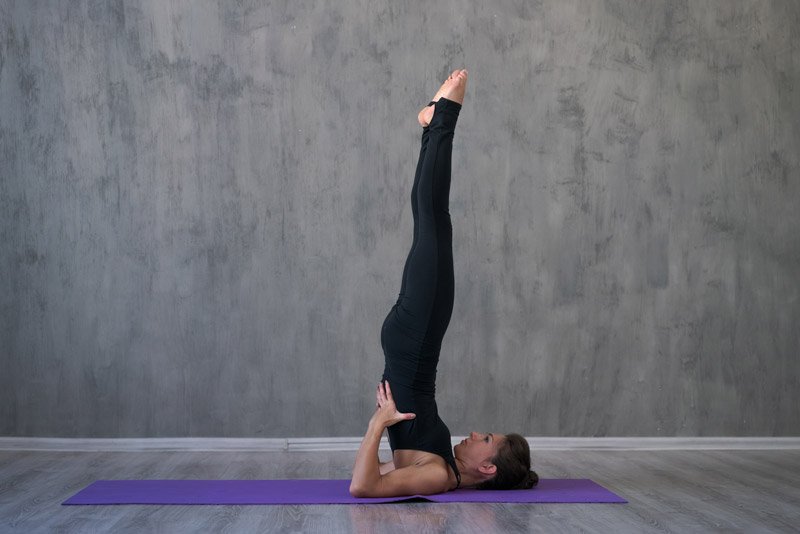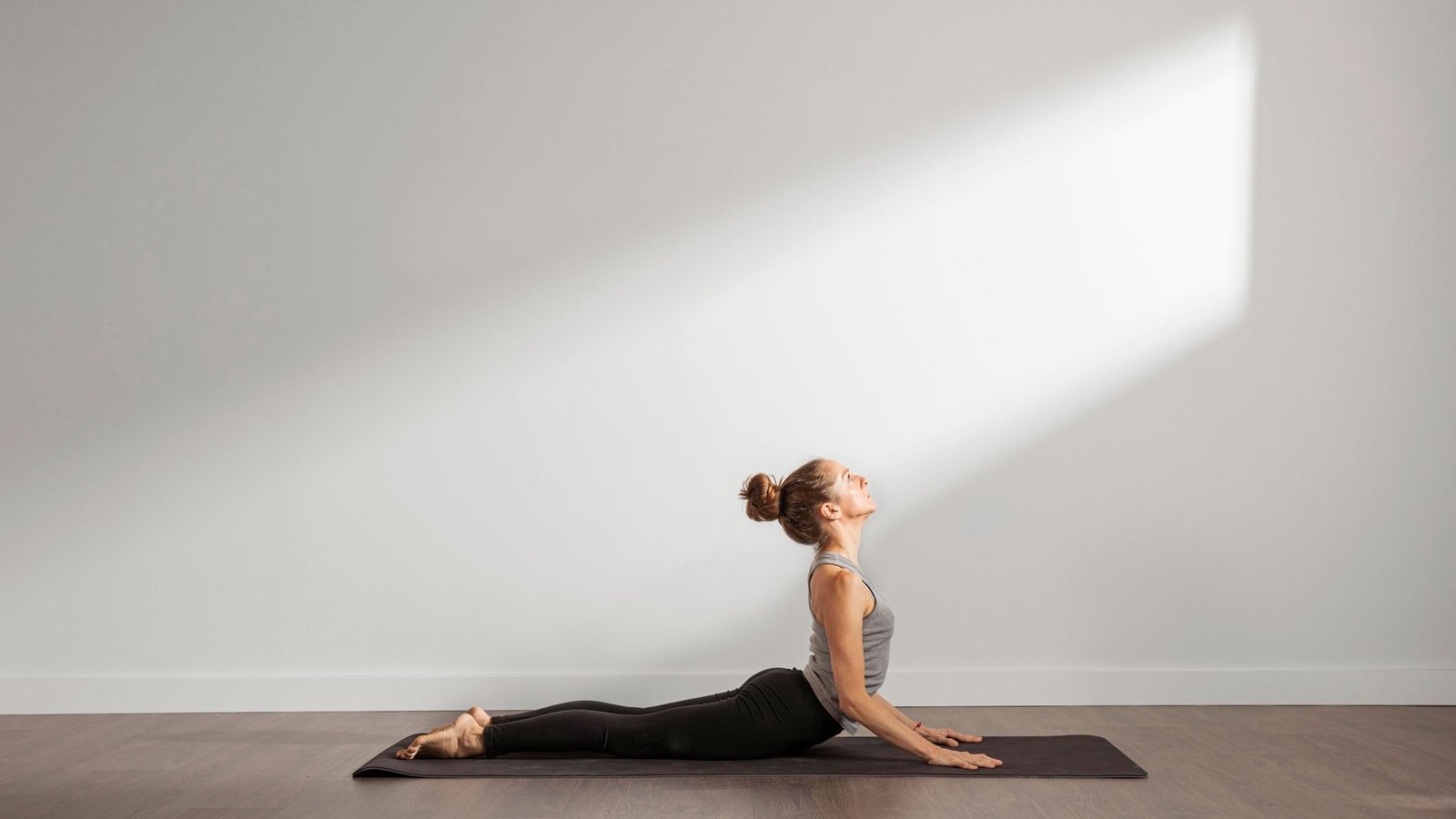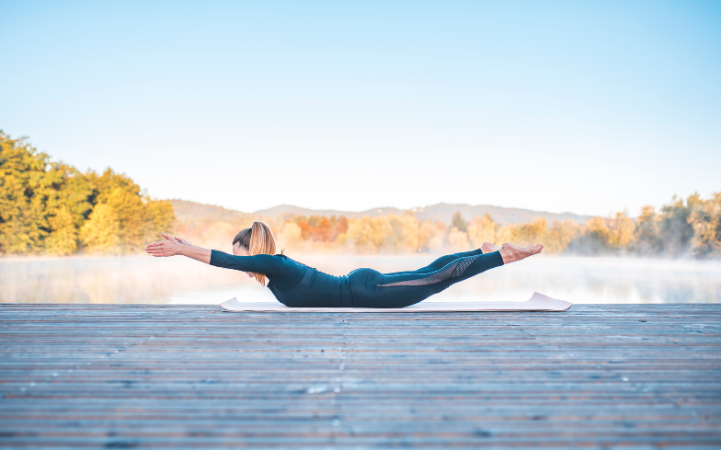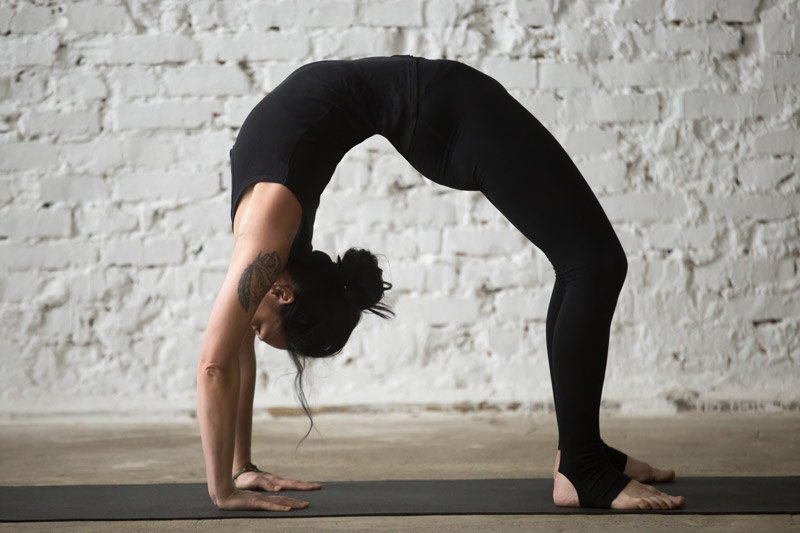Sarvangasana, also known as the Shoulder Stand Pose, is considered one of the most beneficial and powerful yoga postures. Often referred to as the “Queen of Asanas”, it influences nearly every part of the body and is especially known for its effects on the endocrine and circulatory systems. The name is derived from the Sanskrit words Sarva (all), Anga (body parts), and Asana (pose), signifying a posture that benefits the whole body.
This inversion posture is usually practiced near the end of a yoga session to calm the mind and stimulate the body’s internal systems. However, it should be performed with care and awareness due to its intensity and physical demands.
Steps to Perform Sarvangasana
Preparation: Lie flat on your back in Shavasana on a yoga mat. Keep your arms beside your body with palms facing down.
Lift the Legs: Slowly raise both legs together to a 90-degree angle using core strength, keeping them straight.
Raise the Hips: Press your palms into the floor and lift your hips off the ground, bringing your legs over your head (like Halasana or Plough Pose).
Support Your Back: Bend your elbows and place your hands on your lower back to support the spine.
Straighten the Body: Raise your legs and torso upward to form a straight line perpendicular to the floor. Your body weight should rest on your shoulders and upper arms, not the neck.
Hold the Pose: Keep your neck relaxed and eyes fixed on your chest or toes. Hold for 30 seconds to 2 minutes, breathing slowly and deeply.
Release: Gently bring your legs over your head again (like Halasana), then slowly lower your back and legs to the mat with control. Relax in Shavasana.
Benefits of Sarvangasana
Improves Blood Circulation: Being an inversion, it directs blood flow toward the brain and upper body, enhancing circulation.
Stimulates the Thyroid and Parathyroid Glands: The chin lock created in this pose stimulates these glands, balancing metabolism and hormonal function.
Relieves Constipation and Indigestion: By compressing the abdominal organs, it aids digestion and improves elimination.
Calms the Mind: Helps relieve stress, anxiety, and insomnia by calming the nervous system.
Strengthens the Back and Shoulders: Builds strength and flexibility in the spine, neck, and shoulder regions.
Improves Skin Health: Increased blood flow to the face promotes a healthy complexion.
Enhances Energy and Vitality: Boosts energy levels and combats fatigue.
Tips for Practicing Sarvangasana
Use a Blanket: Place a folded blanket under your shoulders to reduce pressure on the neck.
Warm Up First: Prepare the body with backbends, core activation, and hamstring stretches.
Keep the Body Straight: Align your feet, hips, and shoulders vertically to maintain balance and avoid strain.
Don’t Turn the Head: Keep your gaze fixed to avoid neck injury. Never look side to side while in the pose.
Exit Slowly: Always release the pose with control to protect the spine and neck.
Cautions and Contraindications
Neck Issues: Avoid this pose if you have cervical spondylosis, slipped disc, or other neck injuries.
High Blood Pressure or Heart Conditions: Consult a doctor or avoid this pose, as inversions can be intense.
Thyroid Problems: Those with overactive thyroid (hyperthyroidism) should practice with caution or avoid.
Glaucoma or Eye Problems: Increased pressure in the head makes this pose unsuitable for those with eye conditions.
Menstruation and Pregnancy: Avoid Sarvangasana during menstruation and pregnancy unless guided by an experienced teacher.
Sarvangasana is a transformative pose with immense physical, mental, and energetic benefits. Often called the “Mother of all Asanas,” it rejuvenates the entire body and balances various internal systems when practiced correctly. While it requires strength, balance, and awareness, it rewards the practitioner with enhanced vitality, calmness, and inner clarity. Always approach Sarvangasana with respect, proper warm-up, and guidance if you’re new to inversions. With consistent practice, this pose can become a cornerstone of a deeply healing yoga routine.






